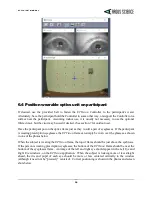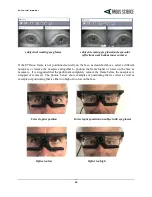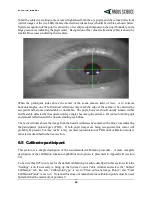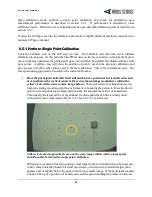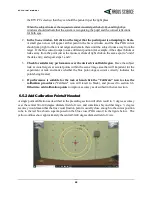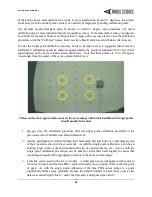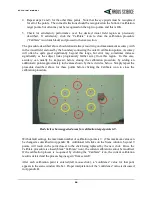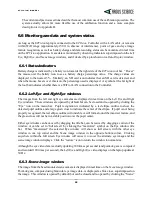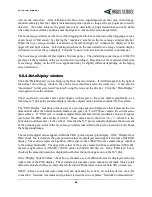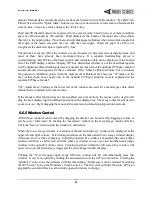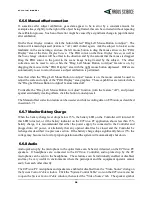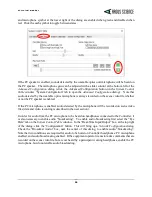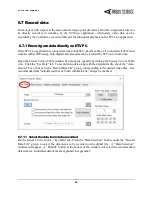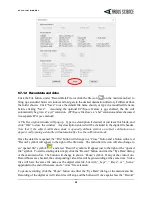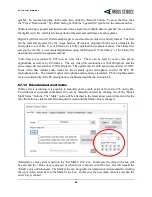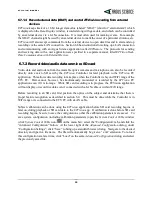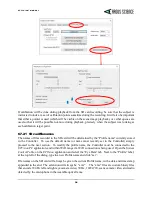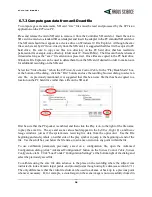
E T V I S I O N M A N U A L
21
Open calibration mode, perform a single point calibration, and check for satisfactory gaze
measurement performance as described in section 6.5.1. If performance is satisfactory, close
calibration mode. Otherwise, leave calibration mode open and add calibration points as described in
section 6.5.2.
If using the
ET3Space
feature, the calibration procedure is slightly different and this is described in a
separate
ET3Space
manual.
6.5.1
Perform Single Point Calibration
Click the Calibrate icon on the
ETVision
tool bar. The Calibrate icon will turn red to indicate
calibration in progress. At this point the blue POG cursor on the
Scene
window will probably begin to
move in the same pattern as the participant’s gaze, but will often be significantly displaced from actual
gaze points. A yellow cross will show the position of point 1 used in the previous calibration, and
gray crosses will show other points used in the last calibration. This is for information only. The
same positions do not need to be used for the current calibration.
1.
Have the participant hold their head still and look at a point near horizontal center and
at or just below the vertical center of the scene camera image (somewhere within the
yellow circle on the scene camera image below).
This can be done by asking the person to
fixate an existing visual target in the environment or by asking the person to fixate the tip of a
pointer (or laser pointer spot) being positioned by the equipment operator or an assistant.
Theoretically the target can be at any distance from the participant, but it is usually most
convenient to use visual targets that are 2 or 3 feet (1/2 to 1 meter) away.
Yellow circle shows approximate area on the scene image within which a target point
should usually be located for single point calibration.
If the person is asked to fixate an existing visual target in the environment it may be necessary
to have them rotate their head a bit either up or down, or side to side, so that the target point
appears near or slightly below the center of the scene camera image. If the participant is asked
to look at the tip of a pointer, it is usually easiest if the person holding the pointer can also see












